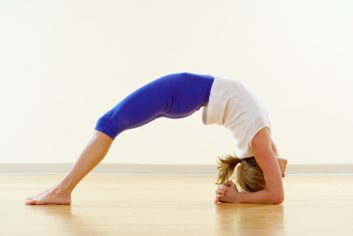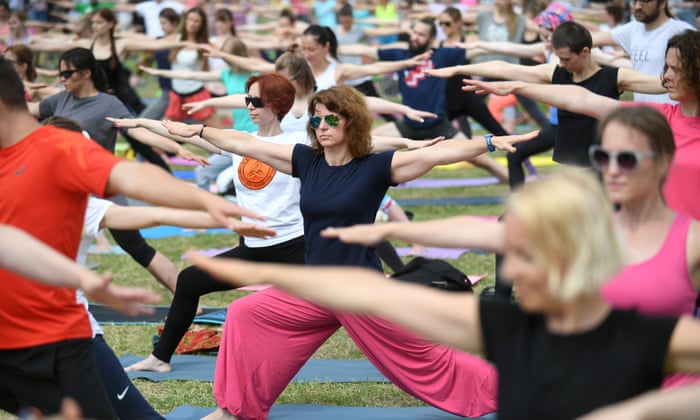"Ego-Driven" Yoga Injuries

"Poses associated with pain first noticed during class appeared to be typical of standard yoga participation."
"Participants may overexert themselves, take a class that is too advanced or try to attain a position they are not prepared for."
"The risks for traumatic, acute injuries may be small, but participants should participate conscientiously to improve or avoid musculo-skeletal pain. Those with existing pain should be even more careful."
"Indeed, 20.9 percent of participants in the current sample reported existing pain that was exacerbated by yoga participation."
Hidden Risks of Yoga study, published in the Journal of Bodywork and Movement Therapies
 |
 |
Studies exist that document yoga's functionality in diminishing back, neck and joint pain. Many yoga practitioners styling themselves as practised yoga instructors boast that they have the knowledge to help people attain improved posture, strength, flexibility and balance. Among these yogis may be some whose knowledge fails to match their enthusiasm, let alone their promises of no-pain guidance in yoga.
Millions of people don't hesitate to place their trust in the healing and restorative powers of yoga, unfailingly attending their local yoga studies, trusting that the training and experience of the instructor who leads their classes does truly reflect what the public relations and advertising boasts claim from among the many and varied yoga practises and certification programs.
But the fact is that people do sustain injuries during their yoga classes, and so the authors of this new study, coming from Boston, New York and Sydney, Australia, collaborated in reviewing published literature studying the issue. Through their reviews they discovered yoga-related injuries reported to range from 2.4 percent annually ranging up to 21.3 percent representing lifetime injuries.
They decided to use questionnaires, sending them out to several thousand participants from among whom they sought volunteers willing to report their yoga habits and any pain that might be associated with them. Another questionnaire followed up a year after, to the 354 recreational yoga practitioners who had agreed to take part in the study.
Respondents, mostly female, had an average age of 45.7 with about ten years of yoga experience which they practised three hours weekly, on average. And of that number the majority (86.7 percent) faithfully reported experiencing pain in at least one area of the body, along with many (65.8 percent) feeling that practising yoga improved their discomfort.
On the other hand, 10.7 percent claimed that it was yoga itself that caused their pain, with a third claiming the pain they suffered mitigated against their practising yoga for as long as three months at a time. Roughly 50 percent of those injured stated they sustained their injuries during a yoga class, with another 21 percent adding that yoga worsened existing pain.
 |
| Photo: Heidi Kristoffer |
Practising yoga was most likely to relieve pain and discomfort in the back and neck for practitioners, while the most common injury sites turned out to be the wrists and hands. The study authors specifically mentioned other studies that named headstands, shoulder stands, the lotus position, half lotus position, forward bends, backward bends and handstands to have been noted for their propensity to increase risk of injury.
In interviews with yoga instructors, issues such as excess effort, poor techniques and inadequate instruction were cited as additional sources of injury, to which was added "ego-driven" performance. It seems logical enough to reach the conclusion that the widespread belief in yoga as being a remedy for what ails, convinces people to feel they are safe in making efforts to go beyond their physical limits.
Even so, injury rates sustained in the practise of yoga are seen to compare with those sustained through other forms of exercise.
 |
| A University of Sydney study found yoga caused musculoskeletal pain – mostly in the arms – in more than 10% of participants. Photograph: Bartlomiej Zborowski/EPA |

0 Comments:
Post a Comment
<< Home